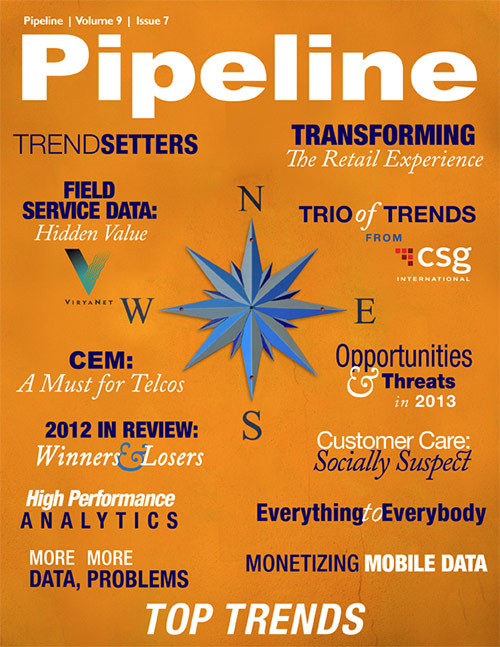Customer Care: Socially Suspect
By: Tim McElligott

No one still doubts the transformative power of social media. The kiddie apps turned revolution-empowering tools of Twitter, Facebook, YouTube, and others have changed humanity and the way we communicate. But technology shouldn’t get all the credit — it’s more accurate to say that humanity changed itself by seizing and utilizing the available social technologies in ways they saw fit. So it shouldn’t have been a surprise how swiftly customers turned that power on the business community, but it was, and companies have been playing catch-up ever since.
The first thing companies learned was that given the cover of anonymity, their once voiceless customers could suddenly be ruthless, relentless and very vocal online critics. All of a sudden protecting brand identity took on a new meaning.
Companies scrambled, scanning the Twitterverse to combat what was becoming the equivalent of some very bad press, much of it heaped on communications service providers. To their credit, CSPs responded quickly, reaching out to frustrated customers to address their concerns. Just as quickly they realized it was better to engage customers through this medium than defend themselves from it, and thus social media became the next new channel for customer care.
However, the jury is still out as to whether social media is a cost-effective, let alone effective, way to do business, and whether or not it’s for everyone. It is interesting to note that Facebook, the social-media outlet companies look to most as a customer-care channel, was ranked lowest in customer satisfaction among e-business sites by the American Customer Satisfaction Index (ACSI). Its report said that despite Facebook’s unrivaled user base, its 61 percent satisfaction rating is one of the lowest of any company in the ACSI.
About ConceptWave
ConceptWave is a leading provider of customer, product, and order lifecycle management solutions that enable communications service providers to rapidly introduce new market offers and to empower superior customer experience. ConceptWave's unique offer is to provide an end-to-end catalog-driven suite of order fulfillment automation software with ConceptWave Order Care and Rapid CRM. ConceptWave products and solutions enable service providers to address competitive requirements and simplify the management of customers, products, and orders, for any product, on any network, in any market, using any channel. ConceptWave is headquartered in Toronto with presence in Americas, Europe and Asia.
That may not affect a CSP’s ability to use Facebook as a channel of its own. Besides, if a CSP is going to engage in social media, it must be on its customers’ terms, and Facebook is the channel that 40.8 percent of people use to engage with the companies they do business with. Another 26.7 percent use Twitter, and 12.7 percent use other social channels, according to a report from Social Media Today, LLC. However, over the past year the number of companies citing Facebook as the most effective channel dropped from 45 to 43 percent, while Twitter dropped from 41 to 21 percent.
The communications industry has more options than some service-product brands because it can more easily form its own customer communities. In fact it is investing in both: Social Media Today’s report said the service industry is heavily dependent on the main social networks and only invests in its own online communities at a rate of 12 percent, whereas the communications industry, while also heavily engaged on both Facebook and Twitter, is investing at a much higher rate in company-owned communities (22.4 percent).
The number of companies handling 25 percent or more of issues or requests through online social-media channels doubled to 18 percent from 2011 to 2012, the survey said. But only 7 percent of companies were “very satisfied” with their own efforts to use social media for customer care.




















